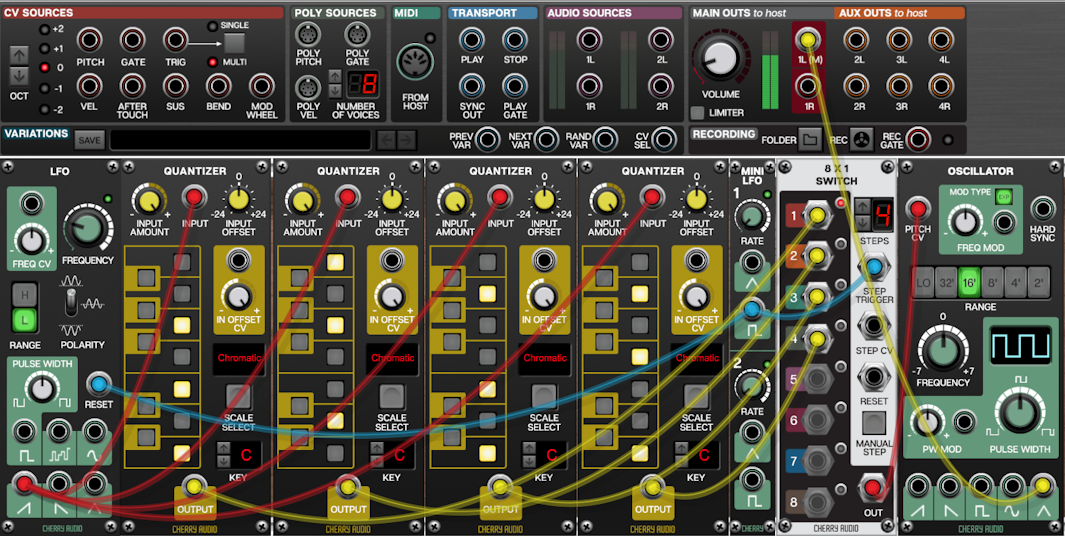SpaceDog wrote: ↑Sun Feb 09, 2025 10:03 pm
I got some interesting results with the Klee, but my main complaint (as it is with quite a few modules) is that I want to be able to control the sequencing to the point where I feel that it's me making the decisions, or pushing the direction, rather than the modules leading me by the nose. A big problem is the usual lack of good documentation with many modules, where I feel the developer just wants us to press things at random and be pleased with what pops out. Yes, I like an element of randomness, but ultimately it's me that should be dictating the outcome.
I've found that one way to address this problem is to use chord progressions.
One can use any generative technique to produce raw material and then use dynamic quantization to mould the results into something more coherent. Once you have explicit control of the chord progression you can compose at a higher level utilizing functional harmony to add "musical grammar and punctuation" to your generative patches.
In practice this means that instead of sending everything through a fixed quantizer that's set to a particular scale, one uses multiple quantizers working in parallel. Each quantizer is set to a particular chord and one then uses a switching module to select which quantizater output to use at each moment. By wiring up the switch inputs in different ways you can create any chord progression you like (within the limit of the switch capacity).
The VERY crude patch below shows how one might begin to approach this...

- CrudeChords.png (747.65 KiB) Viewed 20626 times
For anyone unfamiliar with working with chord progressions I recommend looking at David Bennett's youtube channel.
https://www.youtube.com/@DavidBennettPiano/videos
You can work with chord progressions using only the stock VM modules but before I got bogged down with Adroit Custom this was an area I spent considerable time on. LSSP, the Granular Synth and N-Step can all handle chord progressions using a specialized signal called S-Poly.
The N-Step documentation describes relatively easy ways to sequence chord progressions using the Chord Memory and 8 to 1 Poly Switch modules.
LSSP provides a range of tools that can handle everything from basic diatonic triads to modal scales and includes modules that can do things like automatically create chords from arbitary scales and provide CV control of chord inversion.
For anyone interested in the more complex aspects of generative music I'd recommend they trial both the N-Step and Granular Synth bundles at the same time and read the following documentation and the pages it links to...
https://adroitsynthesis.com/gs-multiple ... gs-bridge/
One method of working I've found fruitful is to build a number of patches that produce interesting textures tuned to C, recording these sounds to audio files. Then start a fresh patch that consists mainly of an N-Step to GS bridge. Then append all the files together into one buffer in GS with multi-timbral access provided by GS Multiplex.
Then use N-Step to create three or four part counterpoint from a chord progression with careful use of N-Step's Bernoulli gates and sample and hold to break up the chord blocking.
By offloading much of the sound synthesis to separate patches and using GS to glue everything together you can produce extremely deep stuff even on a mid-range computer.